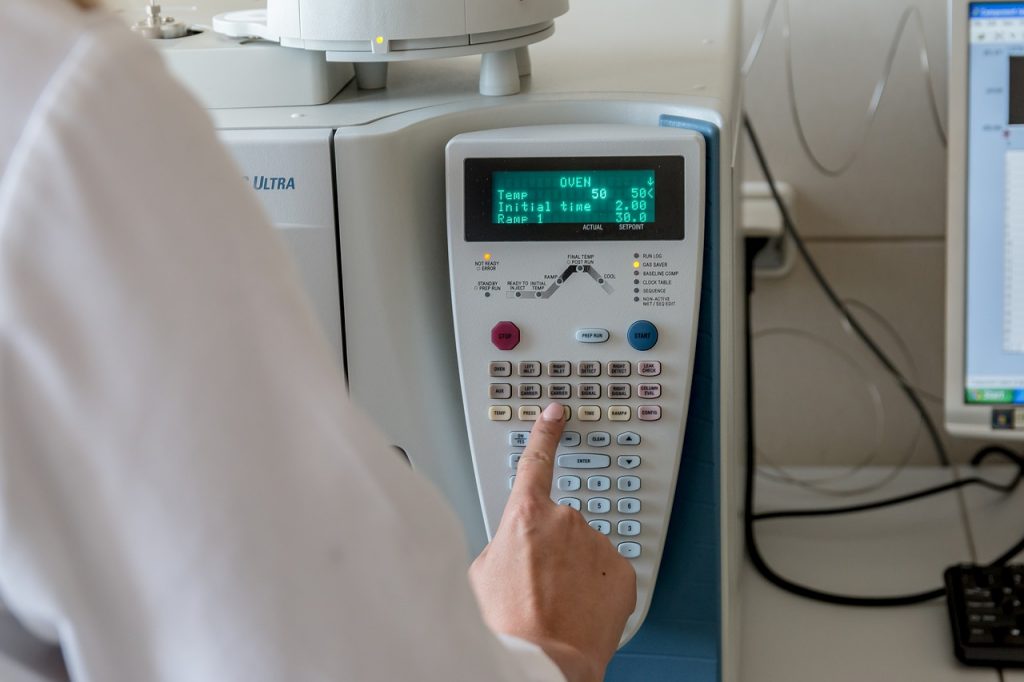Laboratory ovens are multi-purpose appliances used in scientific and manufacturing industries. Their functions are essential in the process of baking, curing, or drying various substances which are later used in science labs, the pharmaceutical industry and in production procedures.
Uses of Laboratory Ovens
Laboratory ovens heat the material through the convection method. The material is placed in a separate chamber rather than the main chamber. It prevents altering the material but the heat is strong enough to dry it or cure it.
The heat transfer in the gravity convection process is achieved by the difference in warmer and cooler air. The heat distribution is quite poor, so most lab ovens work on a principle of mechanical convection, where the insulation produces lesser energy waste and prevents radiant heat from getting out.
The ovens have double walls with a layer of insulation (usually air) between them, in order to conserve energy. The inner wall is made of materials with low thermal conductivity. The outer layer is made of metal. They are equipped with a hot air circulation fan, which allows a uniform distribution of heat.
Annealing
Certain materials like glass or steel require a few steps to increase their flexibility. Since laboratory ovens can heat and cool the matter without damaging it, they are used in metallurgy or medical device industries. The materials that went through the process of annealing are easily cut and modeled into designated products.
Baking
Material science labs of the pharmaceutical industry have a great use from laboratory ovens. The process of baking heats the matter without dehumidifying it. In other words, it saves the humidity of the substance.
Drying
Drying is necessary for clinical and biological labs to preserve the materials by dehumidification. Vacuum ovens and forced air ovens carefully remove the moisture to dry the sample at a lower temperature, while gravity convection ovens take out the humidity from samples through a lighter airflow as these delicate particles are more likely to shatter.
Curing
Curing is another convenient application of laboratory ovens. Semiconductor industries and scientific fields that use polymer in their research benefit greatly from the process of curing. It is a means of making glues, epoxies, and a variety of polymer compounds. It is also used in space systems because of the improved bond strength between materials.
Sterilizing
Lastly, laboratory ovens are used in the medical field for sterilization. The heat in the oven sterilizes lab equipment used for operations, as well as glassware that needs to be clean for research purposes. The temperature for sterilizing is around 320°F. The method itself lasts for at least 45 minutes, after which the material is gradually cooled to keep it from cracking.
Laboratory Ovens in The Industry
Before purchasing a lab oven, you should consult an industrial oven manufacturer to see which type of oven you need. When looking for the perfect laboratory oven, consider what your industry requires.
Various types of laboratory ovens have multiple features which are continuously developed over the years. Therefore, reliable and powerful equipment improves each year and adapts to meet the requirements and needs of laboratories.
The customer can choose from a range of models, whether the oven is intended for quick investment or is equipped with numerous programs with several phases.
Mechanical convection ovens, vacuum ovens, gravity ovens, and high-temperature ovens can be of help in the pharmaceutical industry and laboratories. Multi-purpose and forced-air ovens, on the other hand, are used in glassware drying, while vacuum ovens can dry delicate materials and remove flammable solvents. Benchtop and lab ovens are the ideal solution for smaller spaces and when you need to sterilize, dry, or cure small batch loads.
Reach out to Despatch Ovens to find out more about laboratory ovens and how they can meet your lab procedures’ needs.
Image Credit: jarmoluk via pixabay.com






